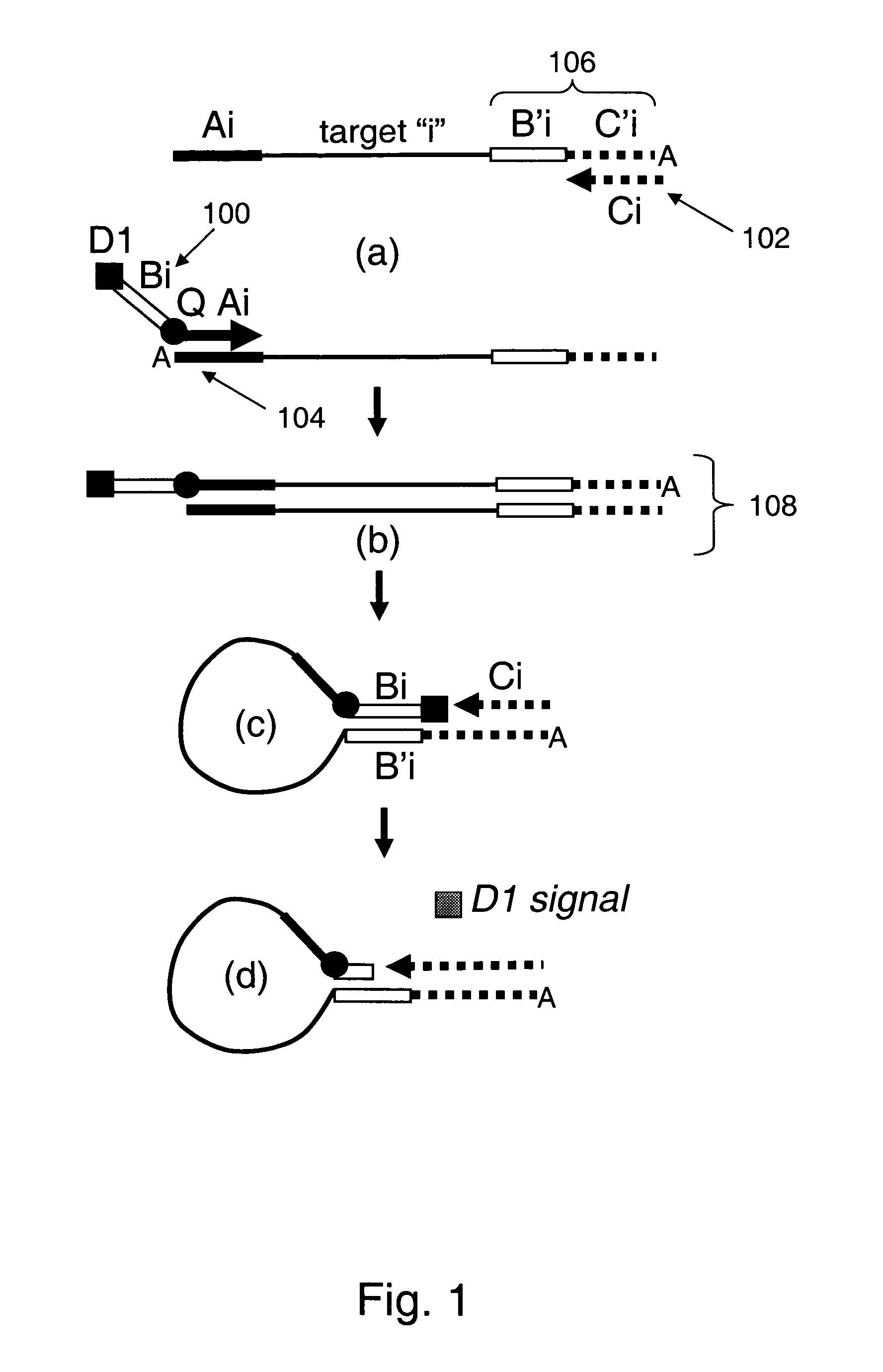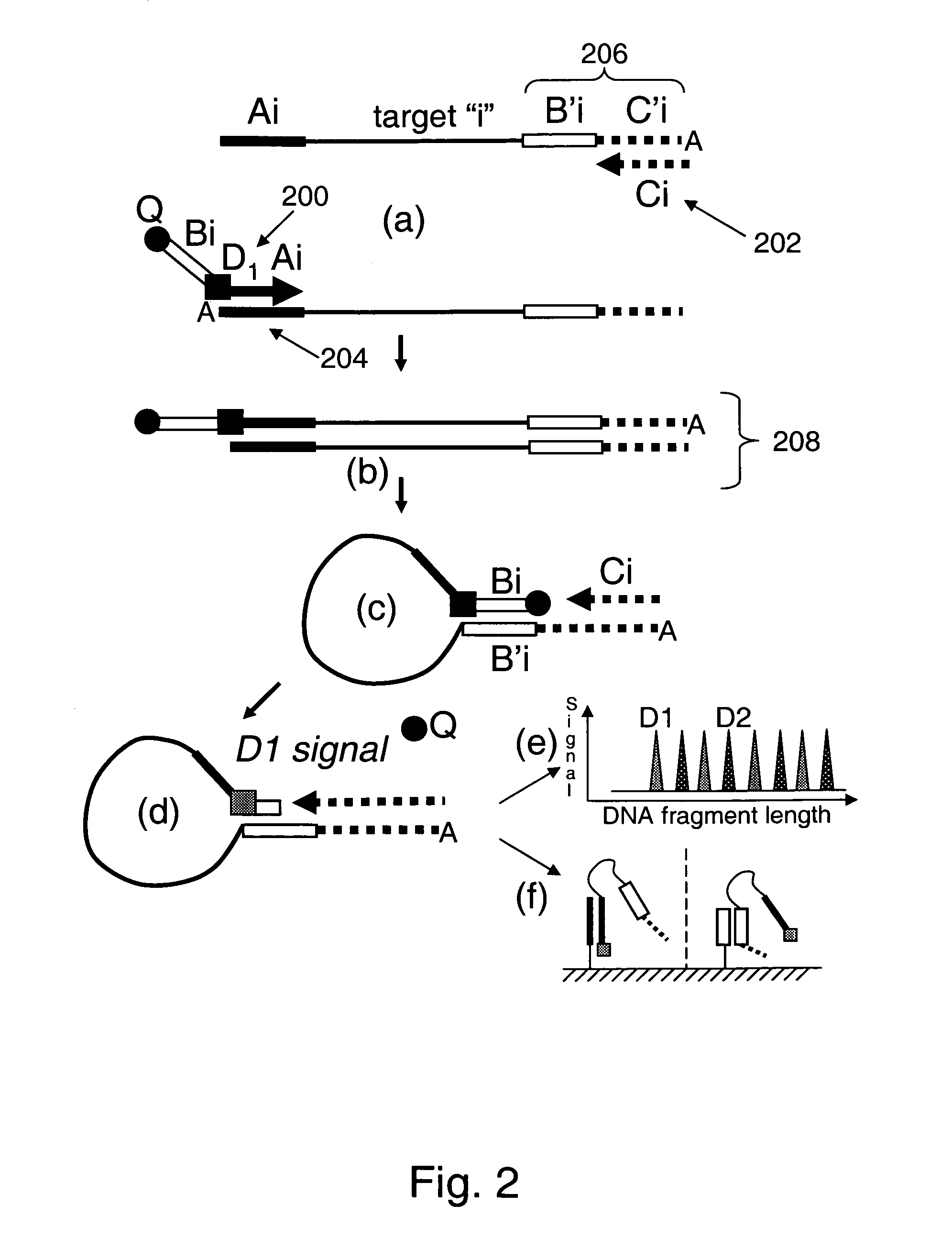Methods and compositions for universal detection of nucleic acids
- Summary
- Abstract
- Description
- Claims
- Application Information
AI Technical Summary
Benefits of technology
Problems solved by technology
Method used
Image
Examples
example universal detection
Composition
[0148]As noted herein, the present invention provides compositions for universally detecting target nucleic acids of interest. For example, as schematically illustrated in FIG. 26, the present invention provides nucleic acid detection reaction mixtures. As shown, the reaction mixtures includes analyte nucleic acid 2600 having nucleic acid subsequence of interest 2602. The analyte nucleic acid also includes first tag sequence 2604, second tag sequence 2606 and third tag sequence 2608. As shown, the second tag sequence is located between the first and third tag sequences. The reaction mixture further includes first universal primer 2610 that includes first tag complement subsequence 2612 that is complementary to first tag sequence 2604. The first universal primer also includes a subsequence that includes second tag sequence 2606 or a subsequence thereof, and detectable label 2614. Optionally, the first universal primer includes label quencher 2616. The reaction mixture furt...
PUM
| Property | Measurement | Unit |
|---|---|---|
| Color | aaaaa | aaaaa |
| Density | aaaaa | aaaaa |
| Volume | aaaaa | aaaaa |
Abstract
Description
Claims
Application Information
 Login to View More
Login to View More - R&D
- Intellectual Property
- Life Sciences
- Materials
- Tech Scout
- Unparalleled Data Quality
- Higher Quality Content
- 60% Fewer Hallucinations
Browse by: Latest US Patents, China's latest patents, Technical Efficacy Thesaurus, Application Domain, Technology Topic, Popular Technical Reports.
© 2025 PatSnap. All rights reserved.Legal|Privacy policy|Modern Slavery Act Transparency Statement|Sitemap|About US| Contact US: help@patsnap.com



